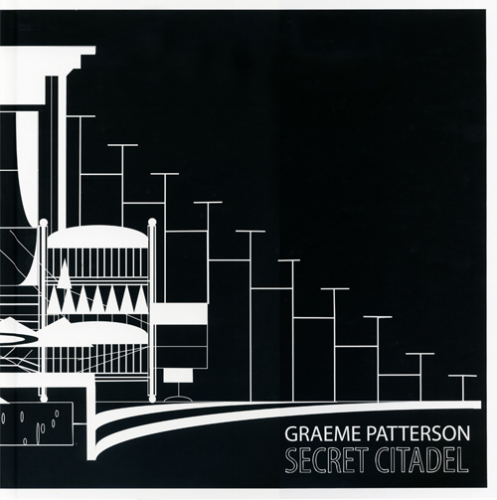Graeme Patterson. Secret Citadel
Graeme Patterson. Secret Citadel. Hamilton, Ed. Art Gallery of Hamilton and the Art Gallery of Nova Scotia, 2013, 200 p. Ill. colour. Eng/Fra.
This magnificent catalogue is an accompaniment to Secret Citadel, an exhibition by artist Graeme Patterson that is currently on tour throughout Canada (curators: Sarah Fillmore and Melissa Bennett). An amply illustrated, fully bilingual volume, it covers four imposing sculptural pieces and the animated film Secret Citadel. Given its theme of childhood memories, this group of works, which took five years to complete, proves an eye-opening ensemble, as portraying this connection to the past is something of a risk in the visual arts. Nonetheless, Patterson’s diorama-based sculptural installations contribute to reconstructing certain moments from a past life, namely those tied to male friendship and to the memories, whether good or bad, associated with it.
The catalogue is divided into chapters that correspond to an interview with the artist and each of the exhibition’s four installations. Mike Landry’s text focuses on The Mountain, a piece based upon the childhood homes of Patterson and his friend Yuki, who eventually had to move away. Camp Wakonda is chiefly composed of two bunk beds, between which a model scene depicts a school bus colliding with a car; Louise Déry’s analysis of this work highlights the relationship between playfulness and tragedy suggested in its underlying narrative. In her text on Grudge Match, Melissa Bennett evokes the phase of adolescence during which male bonds are strengthened through sports and the joy of playing together. Lastly, Ray Cronin examines the final work of the sculptural suite, Player Piano Waltz, symbolic of adult life and its aspect of solitude.
Despite differing points of view, each author draws attention to the importance of biographical elements in Secret Citadel. From unique perspectives, their texts foreground “the rich loam of childhood,” a stage which represents a vital creative space for the artist, yet which, as a fundamentally shared experience, remains universally understood. As a work of art, however, Secret Citadel also features a considerable measure of fiction, for connections to childhood are themselves “a recreation.” This is reflected in the use of animalisation, where the figures of a bison and a cougar embody “the potential fantastic” of the work, whose central theme is childhood friendship – a theme that Patterson is “one of few [to] attentively examine.” Indeed, unlike love, friendship as an interpersonal relationship has seen its value diminish with the spread of Christianity. By staging “the camaraderie and intimacy that characterize friendship between boys,” Secret Citadel is perhaps proposing a “re-thinking of maleness.” This proposal is nonetheless left open in Patterson’s work, for above all, the secret of the citadel is that the adult becomes “the tomb of his own childhood.”
A lone sour note: The translations into French leave much to be desired.
Translated by Michelle Wong

Graeme Patterson. Secret Citadel. Hamilton, Ed. Art Gallery of Hamilton and the Art Gallery of Nova Scotia, 2013, 200 p. Ill. colour. Eng/Fra.





